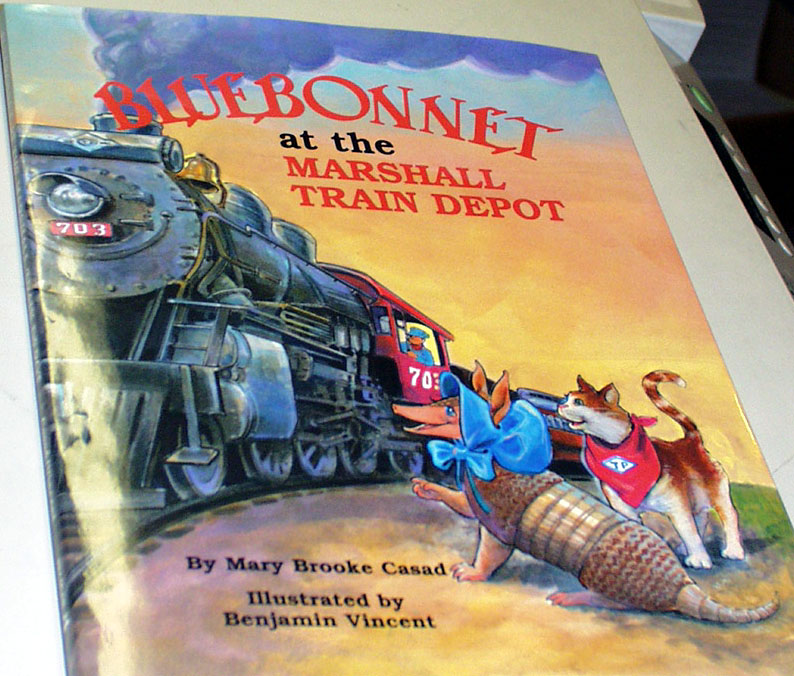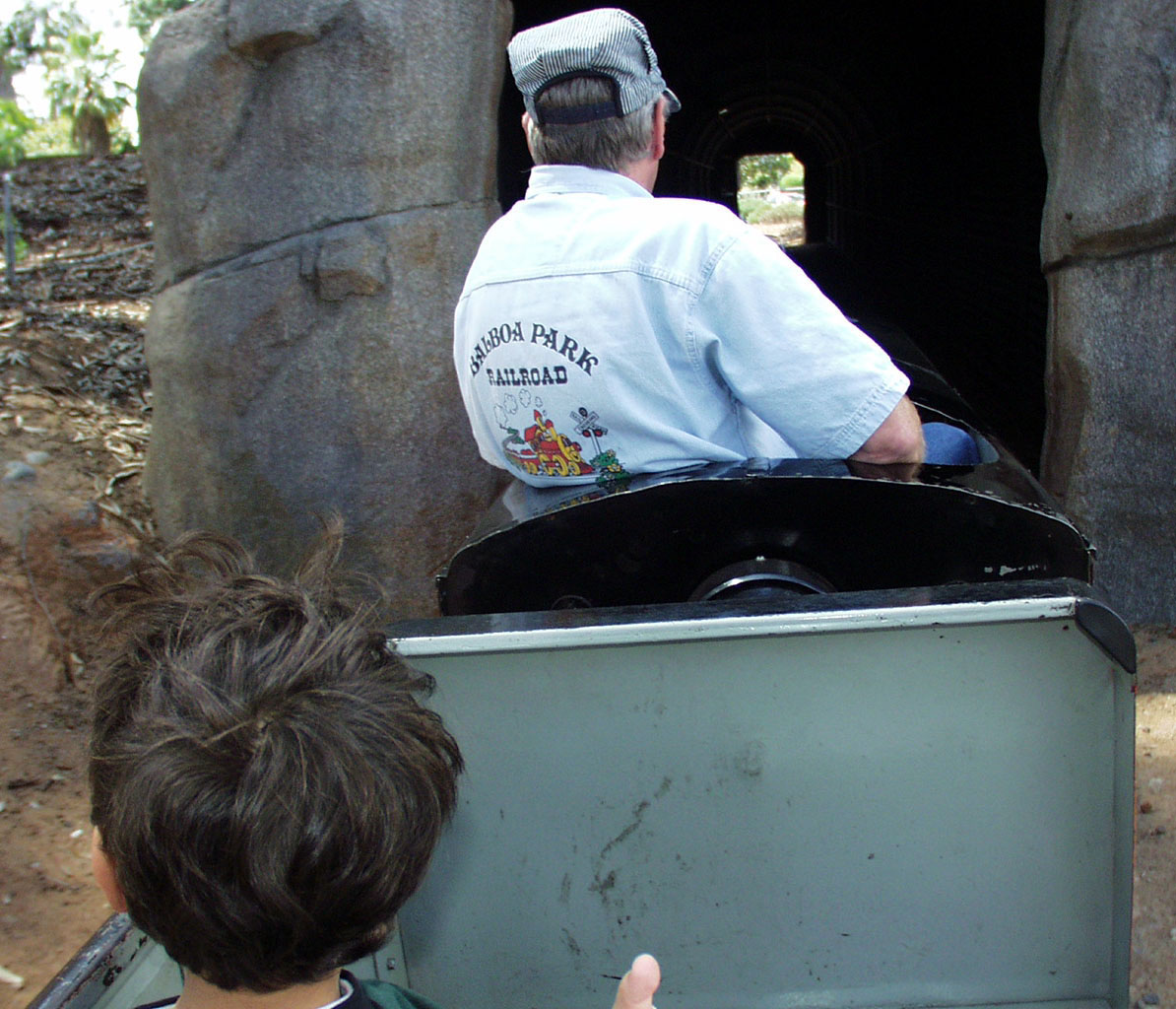|
By Donald H. Harrison
SAN DIEGO—My grandson, Shor Masori, came over to the house on his fifth
birthday on Thursday, April 20, to spend a few hours with me before the
family got together for a celebratory dinner. "Well, Shor, shall I read you
a book?" I inquired. "Yes," he said, although more and more
he likes to read them to me. I reached for one of our favorites
about Noah and the ark, and he made a face. "That was one we read
when I was four," he said. "I want a new one for a
five-year-old!"
Well, okay, I thought, the image of a sinking ark crossing
my mind. I went to a bookshelf and searched for children's books, and
found one that I had purchased in Marshall, Texas, when I was researching the
biography I wrote, Louis Rose: San Diego's First Jewish Settler and
Entrepreneur. Rose
had been one of those city fathers in the 19th century who actively
promoted the idea of San Diego becoming the West Coast terminus of a
transcontinental railroad running along our nation's southern border. On
March 3, 1871, Congress authorized the Texas and Pacific Railroad to acquire the
right of way and to begin construction between Marshall, Texas, which is
near the Texas-Louisiana state line, and San Diego, which, of course, is on a
wonderful bay on the Pacific Ocean.
 Had
it not been for the rough topography lying to the east of San Diego—and a few
nationwide financial panics—San Diego, rather than Los Angeles, might have
been the terminus for a transcontinental route, and who knows how the history of
those two cities might have flip-flopped. The children's book I had
purchased and then had laid away for such a day as this was Bluebonnet at the
Marshall Train Depot by Mary Brooke Casad. Had
it not been for the rough topography lying to the east of San Diego—and a few
nationwide financial panics—San Diego, rather than Los Angeles, might have
been the terminus for a transcontinental route, and who knows how the history of
those two cities might have flip-flopped. The children's book I had
purchased and then had laid away for such a day as this was Bluebonnet at the
Marshall Train Depot by Mary Brooke Casad.
In the tale illustrated by Benjamin Vincent, an armadillo named Bluebonnet
wanders into Marshall and is met by TP the cat, who keeps watch over the Texas
& Pacific Depot. TP then takes Bluebonnet on a tour of the train
station, reciting more history than Shor really wanted to know, but the
armadillo seemed downright interested. Shor's interest quickened however when TP
and Bluebonnet decided to take a train ride together—neither of them having
ever taken one before. The two animal friends got on the train just in the nick
of time What happened next was left to the readers' imagination, perhaps
to be answered in a sequel.
As we read, Shor learned important words like "conductor,"
"locomotive," and "caboose." When we completed reading
the book, we went into his room—yes, he has his own room at his grandparents'
house, the same room that once belonged to his mother, Sandi
Masori—and retrieved his small train set. We pieced together the
circular railroad tracks and identified which car in the train set was the
caboose. We pushed the train around the tracks and made the sounds of
steam whistles together, probably driving grandma,
who was in a nearby room, close to distraction until it was time to get ready
for the birthday dinner.
On Friday, Shor came for another visit, and I had a surprise cooked up. We drove
to Balboa Park, where we went first to the 28,000-square-foot San Diego Model
Railroad Museum, located in the basement of the Casa de Balboa. I knew the
location well because on the same floor of this building are the archives of the
San Diego Historical Society, where I had spent so much time researching the
life of Rose.
Shor circled twice, or perhaps three times, through the various model train
exhibits including four major re-creations or conceptualizations: San Diego
& Arizona Eastern, Tehachapi Pass, Cabrillo Southwestern and
Pacific Desert Lines. The latter conceptualizes the California portion of
the route that Rose and other pioneers had envisioned as a stimulus for San
Diego's economic destiny. Occasionally, Shor climbed steps leading to
vantage points providing better views of the model railroads, but mostly he was
fascinated by the floor surrounding the exhibits on which had been laid
simulated tracks bearing the names of donors to the museum. He followed
the tracks determinedly, occasionally whoo-whoo-ing as he imagined himself to be
a runaway train.
 Perhaps
we will return on other occasions to examine the details of the model railroad
more closely, this being simply an introductory visit. Leaving the museum, we
walked up the Prado, to Balboa's giant fig tree, had an ice cream, walked
through beautiful Spanish Village, to my next surprise for Shor—a ride on
Balboa Park's Miniature Railroad. The train was just leaving the station
as we arrived, and unlike Bluebonnet and TP, we did not just make it.
While I bought tickets for the next run, Shor could hardly contain his
excitement until the train completed its half-mile circuit about three minutes
later. Perhaps
we will return on other occasions to examine the details of the model railroad
more closely, this being simply an introductory visit. Leaving the museum, we
walked up the Prado, to Balboa's giant fig tree, had an ice cream, walked
through beautiful Spanish Village, to my next surprise for Shor—a ride on
Balboa Park's Miniature Railroad. The train was just leaving the station
as we arrived, and unlike Bluebonnet and TP, we did not just make it.
While I bought tickets for the next run, Shor could hardly contain his
excitement until the train completed its half-mile circuit about three minutes
later.
Shor took the seat right behind the engineer, and I took the seat right behind
him, holding his hand for safety. Away we went, whistle blowing, and I
don't think anything could have been better as far as Shor was concerned—but I
was wrong. The best part was when we went through a long tunnel and the
conductor blew the whistle again. I'll have to admit, the echo was
impressive.
We returned to the large fountain of Balboa Park where Shor
made a wish and tossed a penny, and then headed for our car. We talked
over our adventure as we drove home. "What kind of trip would you
rather go on, a train or an ark?" I asked Shor. He didn't hesitate
for a moment. "An ark!" he replied. "That way, I'd
meet Noah."
That's my grandson, I thought. I don't know if Shor got what he wished
for, but I certainly did!
|

